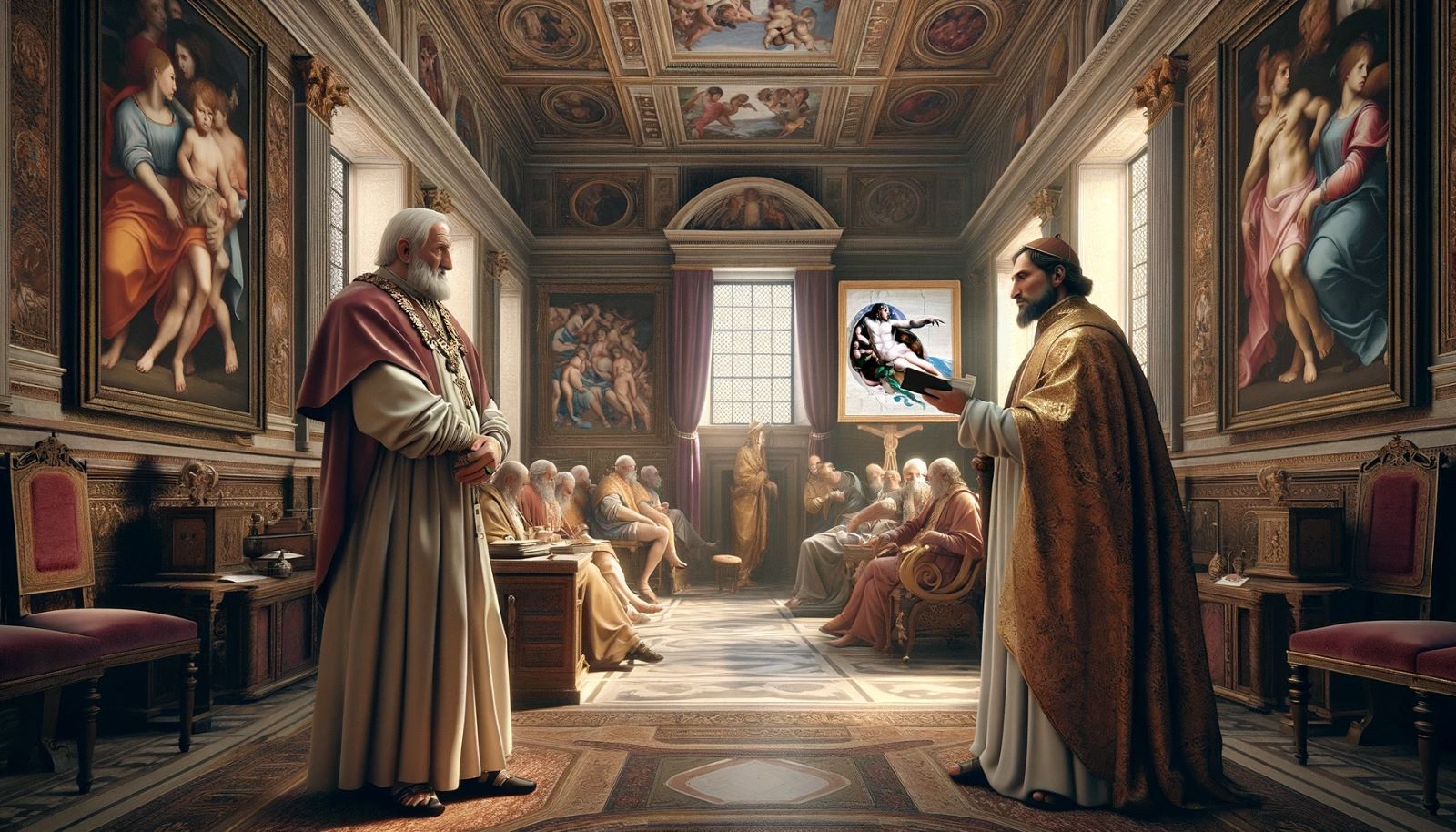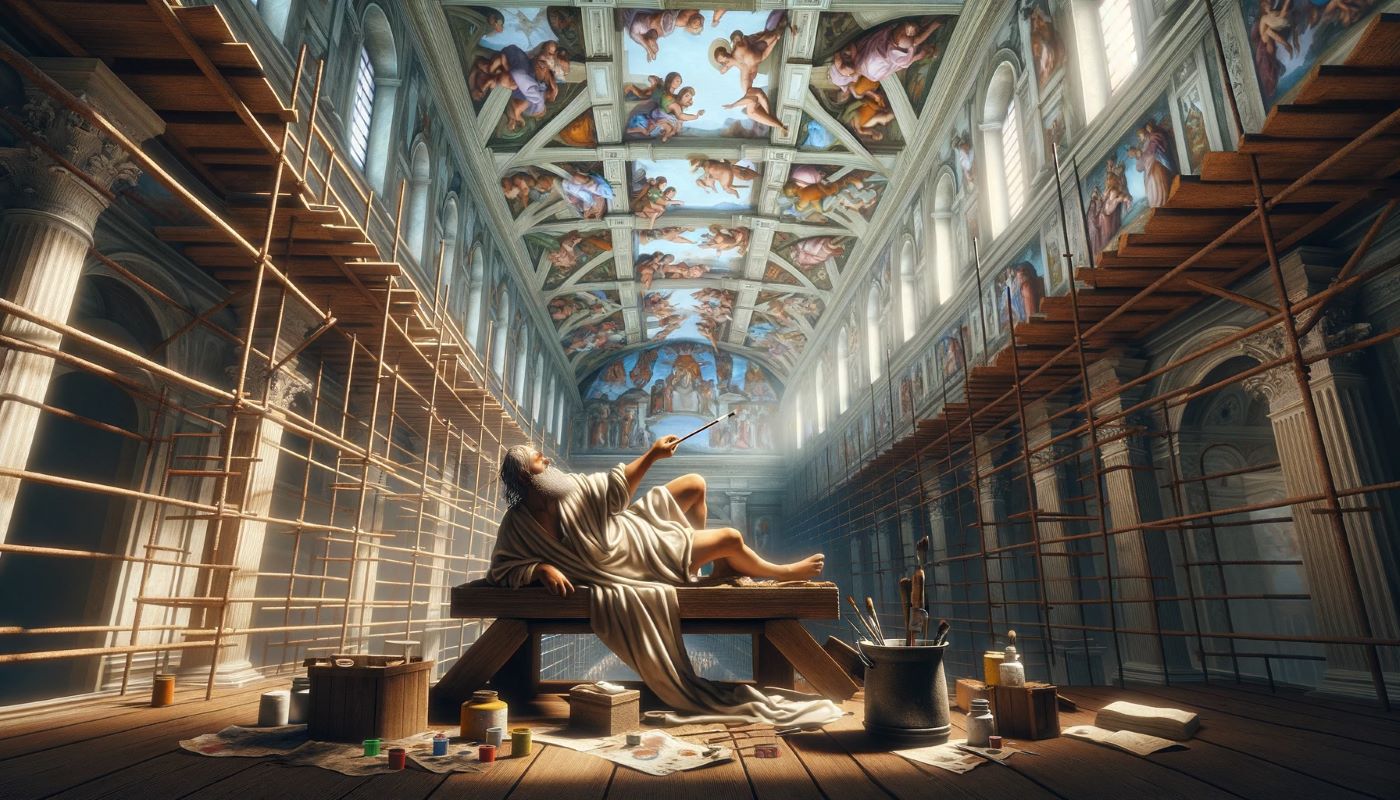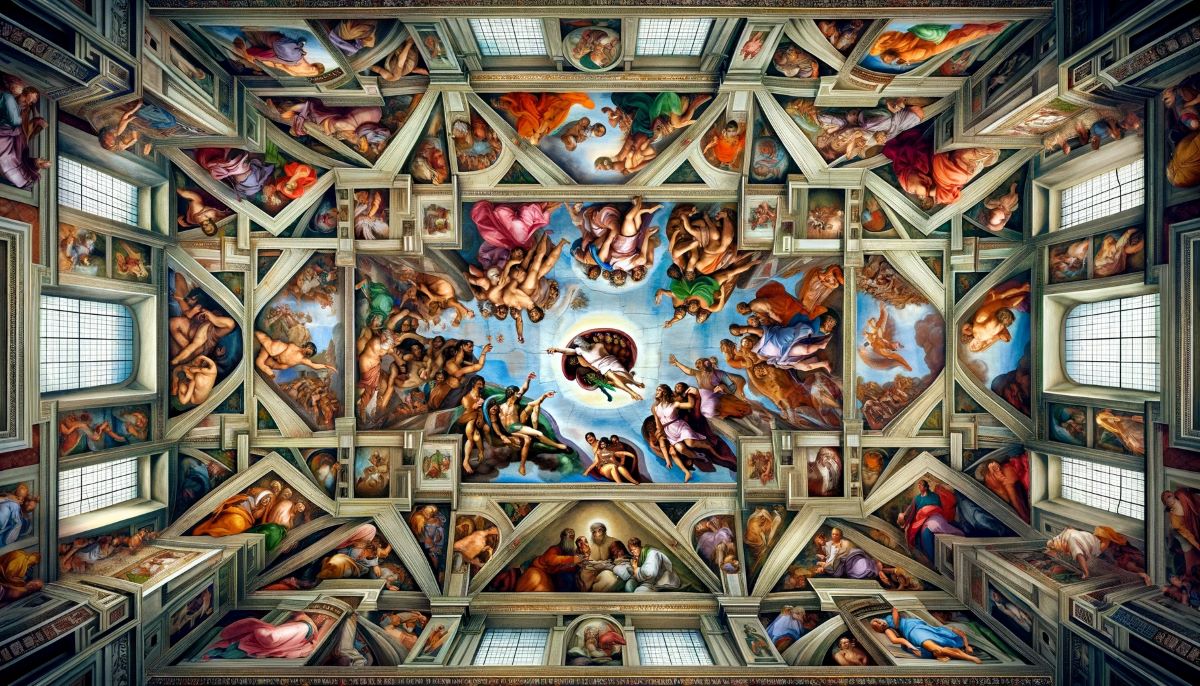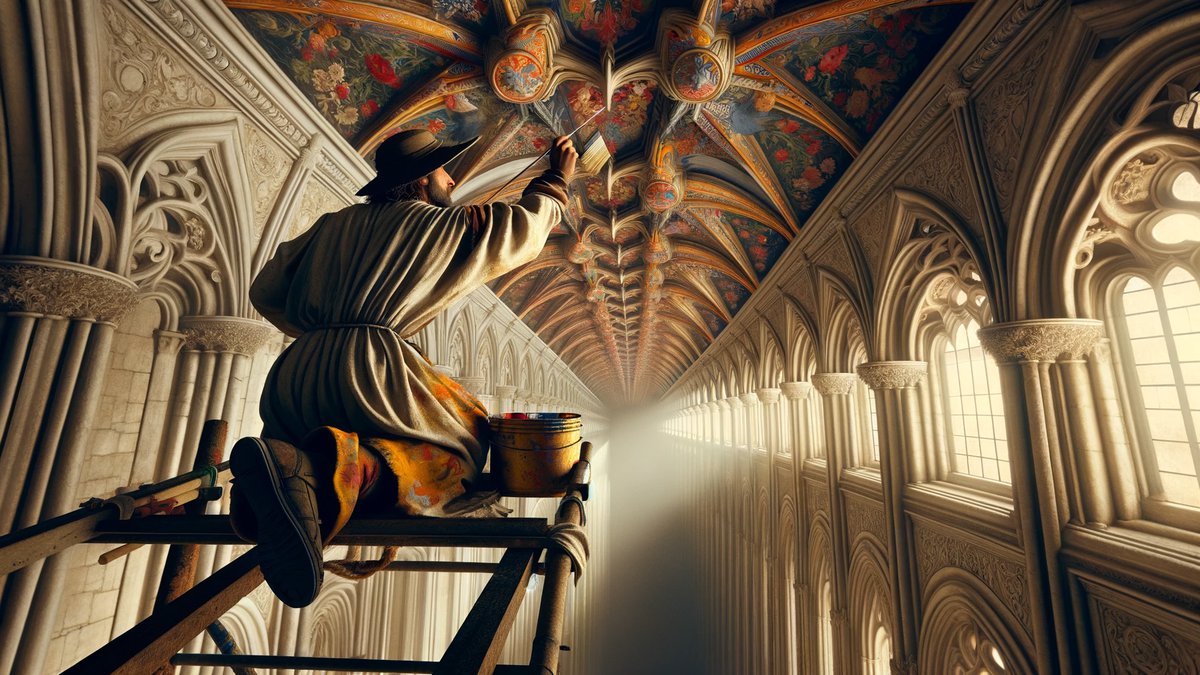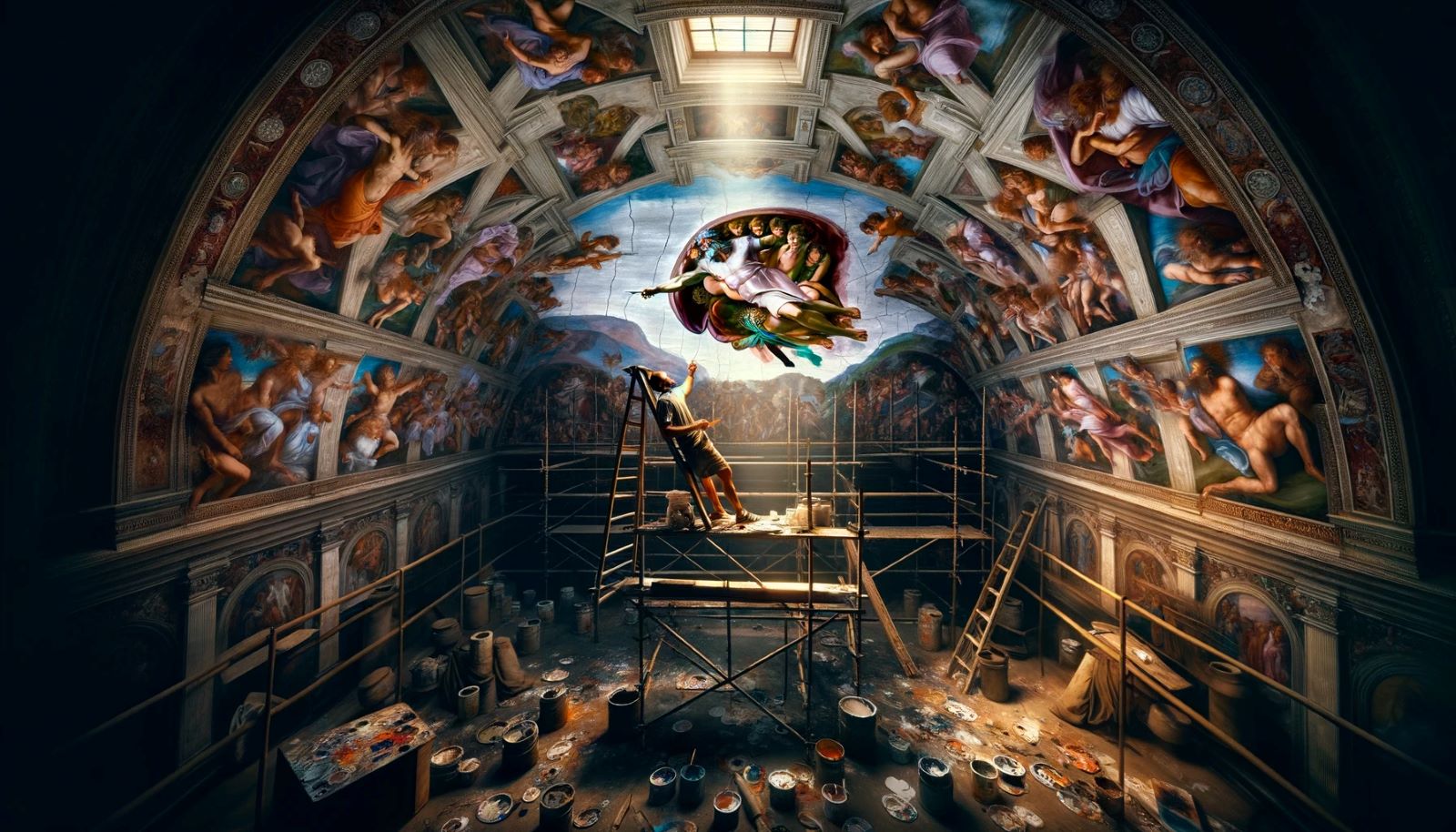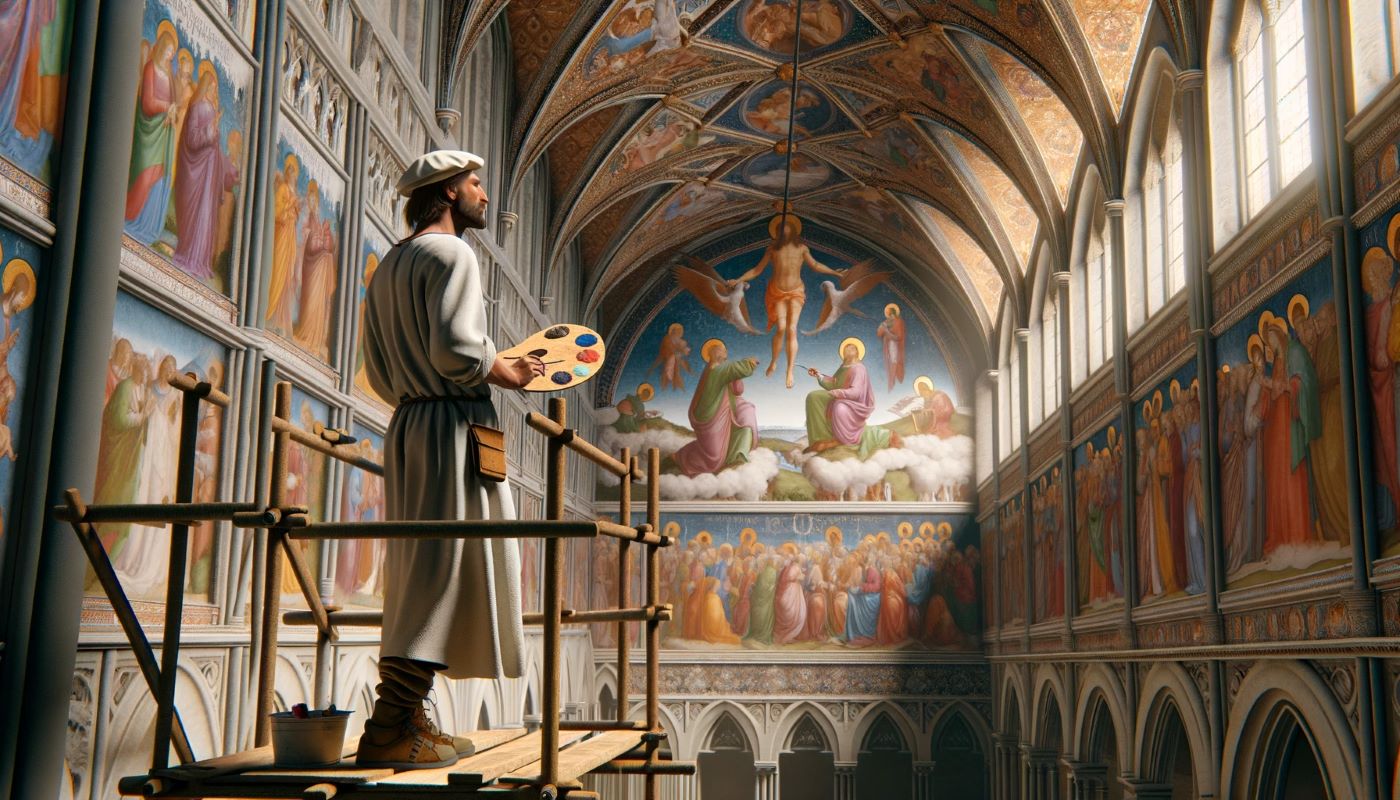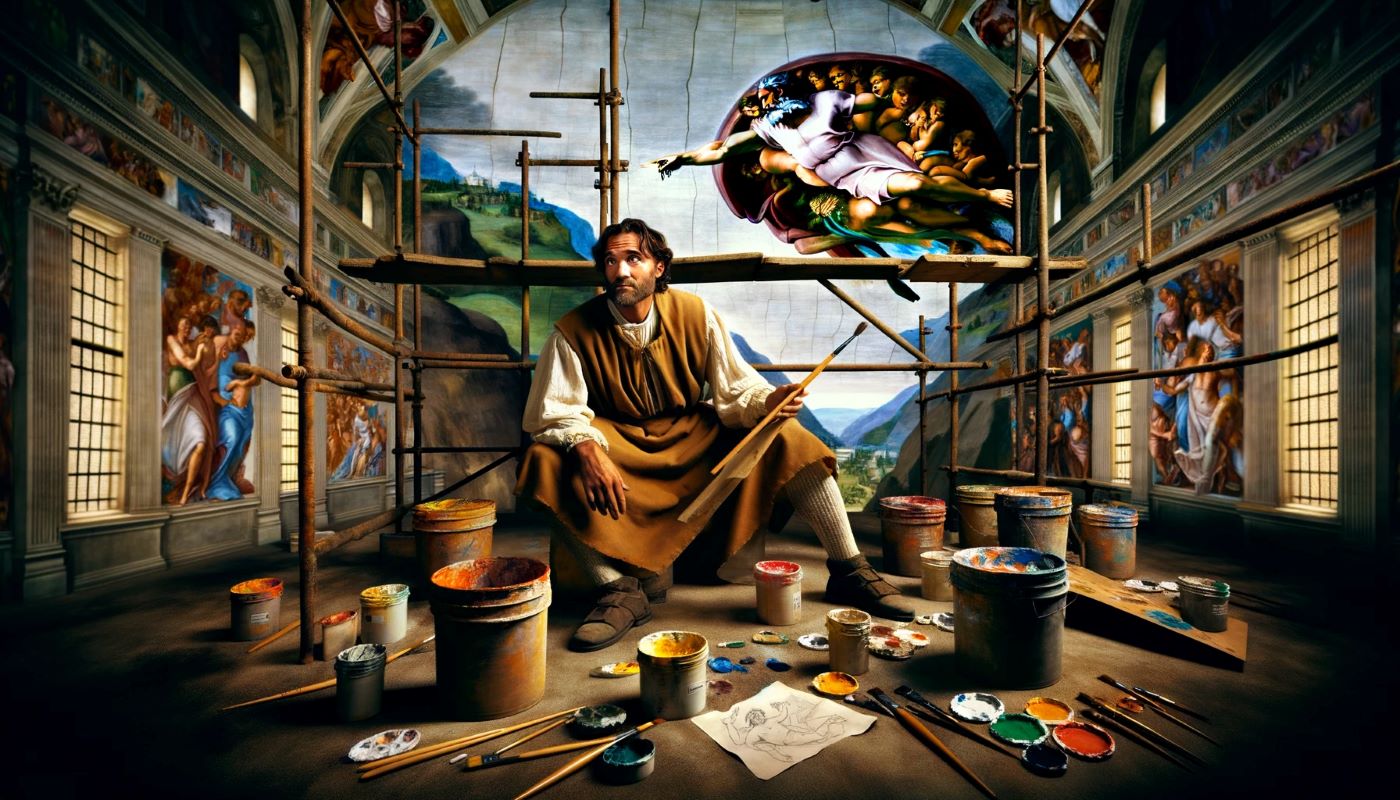Home>Arts and Culture>Who Painted The Ceiling Of The Sistine Chapel In The Vatican?


Arts and Culture
Who Painted The Ceiling Of The Sistine Chapel In The Vatican?
Published: March 4, 2024
Peter Smith, Editorial Director at Christian.net, combines deep insights into faith, politics, and culture to lead content creation that resonates widely. Awarded for his contributions to religious discourse, he previously headed a major organization for religious communicators, enhancing dialogue on faith's societal impacts.
Discover the artist behind the iconic Sistine Chapel ceiling in the Vatican. Explore the rich history of arts and culture with this fascinating masterpiece.
(Many of the links in this article redirect to a specific reviewed product. Your purchase of these products through affiliate links helps to generate commission for Christian.net, at no extra cost. Learn more)
Table of Contents
Introduction
Who painted the ceiling of the Sistine Chapel in the Vatican? The answer to this question lies in the remarkable life and work of the renowned artist Michelangelo. The Sistine Chapel ceiling is one of the most celebrated artistic achievements in history, and understanding the story behind its creation provides insight into the genius of the man behind it. Michelangelo's contribution to the Sistine Chapel is a testament to his unparalleled talent and the enduring impact of his work on the world of art and religion. Let's delve into the fascinating journey of Michelangelo and the creation of this iconic masterpiece.
The Life of Michelangelo
-
Early Years: Michelangelo Buonarroti was born on March 6, 1475, in Caprese, Italy. From a young age, he displayed a remarkable talent for art and was apprenticed to the painter Domenico Ghirlandaio at the age of 13. His early exposure to the world of art and his innate skill set the stage for his future as a master artist.
-
Renaissance Influences: During the Renaissance, Michelangelo's artistic prowess flourished under the influence of prominent figures such as Lorenzo de' Medici. He honed his craft in various artistic disciplines, including sculpture, painting, and architecture, establishing himself as a multifaceted creative force.
-
Patronage of the Church: Michelangelo's relationship with the Catholic Church was pivotal in shaping his career. His commissions from the Church, including the renowned Pieta and the David sculpture, showcased his ability to infuse religious themes with profound emotional depth and technical brilliance.
-
Legacy and Impact: Michelangelo's legacy extends far beyond his artistic achievements. His contributions to the world of art and his influence on subsequent generations of artists solidify his status as a cultural icon. His dedication to his craft and his unwavering commitment to excellence continue to inspire and captivate audiences worldwide.
-
Death and Beyond: Michelangelo passed away on February 18, 1564, leaving behind a legacy that endures to this day. His impact on the world of art and his profound influence on religious imagery ensure that his name will forever be synonymous with artistic brilliance and creative innovation.
The Commission of the Sistine Chapel Ceiling
-
Papal Commission: In 1508, Pope Julius II commissioned Michelangelo to decorate the ceiling of the Sistine Chapel. The initial task was to paint the twelve apostles on the triangular pendentives supporting the ceiling. However, Michelangelo proposed a more ambitious plan to depict scenes from the Book of Genesis and other biblical narratives, which was ultimately approved by the Pope.
-
Artistic Vision: Michelangelo envisioned a grand portrayal of biblical stories that would transcend the limitations of traditional fresco painting. His aspiration was to create a visually stunning and spiritually evocative masterpiece that would inspire awe and reverence among the viewers.
-
Challenging Endeavor: The project presented significant challenges, both artistically and physically. Michelangelo, primarily a sculptor, had limited experience with fresco painting. Additionally, the unconventional technique of painting on a curved surface required innovative approaches to ensure the success of the endeavor.
-
Unwavering Dedication: Despite the daunting nature of the task, Michelangelo approached the project with unwavering dedication and an uncompromising commitment to excellence. His relentless pursuit of perfection and his artistic ingenuity propelled him to overcome the formidable obstacles inherent in the monumental undertaking.
-
Historical Significance: The commission of the Sistine Chapel ceiling marked a pivotal moment in the history of art and religious patronage. It represented a convergence of artistic brilliance and spiritual devotion, as Michelangelo's work transcended the realm of mere decoration to become a profound expression of faith and creativity.
-
Enduring Impact: The commission of the Sistine Chapel ceiling not only transformed the artistic landscape of the Vatican but also left an indelible mark on the trajectory of Western art. Michelangelo's visionary approach and his unparalleled execution of the project elevated the ceiling to an iconic status, ensuring its enduring impact on subsequent generations of artists and admirers.
The Iconic Scenes on the Ceiling
-
Creation of Adam: One of the most iconic and recognizable scenes on the Sistine Chapel ceiling is the depiction of the Creation of Adam. This masterpiece portrays the moment when God breathes life into Adam, the first man, with their outstretched hands almost touching. The profound symbolism and emotional intensity captured in this scene have made it a timeless representation of divine creation and the relationship between humanity and the divine.
-
The Separation of Light from Darkness: Another striking portrayal on the ceiling is the Separation of Light from Darkness, illustrating the biblical account of the creation of light. The dynamic composition and the interplay of light and shadow in this scene convey a sense of cosmic drama, emphasizing the transformative power of divine intervention in shaping the world.
-
The Deluge: Michelangelo's rendition of the Deluge, depicting the Great Flood, is a dramatic and evocative portrayal of the biblical narrative. The tumultuous energy and raw emotion conveyed in this scene capture the harrowing impact of the cataclysmic event, serving as a poignant reminder of the consequences of divine judgment and the resilience of the human spirit.
-
The Last Judgment: Adorning the altar wall of the Sistine Chapel, The Last Judgment is a monumental fresco that represents the second coming of Christ and the final judgment of humanity. This awe-inspiring composition depicts the righteous ascending to heaven and the damned being cast into the depths of hell, encapsulating the profound theological themes of redemption, salvation, and divine justice.
-
The Prophets and Sibyls: Surrounding The Last Judgment are depictions of prophets and sibyls, representing the anticipation of the coming of Christ from both the Old Testament and classical antiquity. These figures embody the prophetic tradition and serve as a testament to the continuity of divine revelation across different cultural and historical contexts.
-
The Ancestors of Christ: The lunettes above the windows of the chapel feature representations of the ancestors of Christ, further enriching the theological narrative woven into the fabric of the ceiling. These ancestral figures symbolize the lineage of Christ and the fulfillment of the messianic prophecies, underscoring the interconnectedness of the Old and New Testaments within the overarching framework of Christian theology.
-
The Libyan Sibyl: Among the sibyls depicted on the ceiling, the Libyan Sibyl stands out for her enigmatic and captivating presence. Her portrayal embodies the mystique and wisdom associated with the sibylline tradition, adding a layer of mythic resonance to the overarching religious themes permeating the artistic ensemble of the Sistine Chapel.
-
The Ignudi and Cherubim: The decorative elements of the ceiling, including the ignudi (nude male figures) and cherubim, contribute to the overall aesthetic and symbolic richness of the composition. These embellishments, meticulously rendered with Michelangelo's signature virtuosity, enhance the visual splendor of the ceiling while reinforcing the spiritual and theological significance of the overarching narrative.
The Sistine Chapel ceiling stands as a testament to Michelangelo's unparalleled artistic vision and technical mastery, encapsulating the grandeur of divine creation, the drama of human existence, and the transcendent power of faith and redemption. Each scene and motif on the ceiling contributes to a cohesive and profound artistic statement that continues to inspire and captivate audiences with its timeless beauty and spiritual resonance.
The Creation of Adam
One of the most iconic and recognizable scenes on the Sistine Chapel ceiling is the depiction of the Creation of Adam. This masterpiece portrays the moment when God breathes life into Adam, the first man, with their outstretched hands almost touching. The profound symbolism and emotional intensity captured in this scene have made it a timeless representation of divine creation and the relationship between humanity and the divine.
The central focus of the composition is the charged encounter between the divine and the human. God, depicted as a majestic and bearded figure surrounded by angels, extends his hand towards Adam, who reclines in a state of awakening. The physical proximity between the two figures, with their fingers nearly touching, conveys a sense of imminent connection and the transmission of life-giving energy from the divine to the mortal realm.
The dynamic interplay of light and shadow in the scene enhances the dramatic tension, accentuating the significance of the transformative moment. The contrast between the luminous, ethereal realm inhabited by God and the earthy, corporeal realm inhabited by Adam underscores the profound spiritual and existential implications of the encounter.
The composition's symmetrical balance and harmonious proportions contribute to the scene's visual impact, drawing the viewer's gaze towards the focal point of the divine gesture. The surrounding figures and architectural elements serve to frame and accentuate the central drama, creating a sense of spatial depth and narrative richness.
The emotional depth and psychological complexity conveyed in the facial expressions and body language of God and Adam imbue the scene with a profound sense of human vulnerability and divine compassion. The tender yet powerful exchange between the Creator and his creation encapsulates the essence of the human quest for meaning and transcendence, resonating with audiences across cultures and epochs.
Michelangelo's masterful execution of the Creation of Adam elevates the scene beyond mere representation, transforming it into a transcendent meditation on the nature of existence and the enduring mystery of divine grace. The enduring appeal of this iconic portrayal lies in its ability to evoke a sense of wonder, awe, and contemplation, inviting viewers to ponder the profound implications of the divine-human encounter depicted on the ceiling of the Sistine Chapel.
The Last Judgment
The Last Judgment, adorning the altar wall of the Sistine Chapel, is a monumental fresco that represents the second coming of Christ and the final judgment of humanity. This awe-inspiring composition depicts the righteous ascending to heaven and the damned being cast into the depths of hell, encapsulating the profound theological themes of redemption, salvation, and divine justice.
The central figure of Christ, depicted in a commanding posture, serves as the focal point of the composition, radiating divine authority and compassion. His outstretched arms and the wounds on his hands and side symbolize the sacrificial nature of his redemptive mission, underscoring the transformative power of divine love and mercy.
The surrounding multitude of figures, including angels, saints, and the resurrected, conveys a sense of dynamic movement and emotional intensity, reflecting the profound impact of the impending judgment. The interplay of light and shadow accentuates the dramatic tension, evoking a sense of cosmic significance and spiritual urgency.
The juxtaposition of the saved and the damned, with the blessed ascending towards the heavenly realm and the condemned descending into the abyss of hell, conveys the stark contrast between divine grace and human folly. The visceral portrayal of the torments endured by the damned and the ecstatic rapture of the redeemed underscores the moral and existential implications of the judgment.
The intricate details and symbolic richness of the composition, including the portrayal of virtues and vices, the personification of theological concepts, and the evocation of biblical narratives, contribute to the multifaceted theological narrative woven into the fabric of the fresco. The visual complexity and thematic depth invite viewers to contemplate the profound mysteries of faith and the human condition.
Michelangelo's masterful execution of The Last Judgment transcends the realm of mere representation, offering a profound meditation on the eternal consequences of human actions and the transformative power of divine grace. The enduring impact of this iconic fresco lies in its ability to evoke a sense of moral introspection, spiritual contemplation, and existential reassessment, resonating with audiences across generations and cultural boundaries.
Legacy of the Sistine Chapel Ceiling
The legacy of the Sistine Chapel ceiling transcends the boundaries of art and religion, leaving an indelible mark on the cultural landscape of humanity. Michelangelo's masterful creation continues to inspire awe and reverence, serving as a testament to the enduring power of artistic expression and spiritual devotion. The legacy of the Sistine Chapel ceiling encompasses a multitude of dimensions, each contributing to its profound and far-reaching impact on the world.
-
Artistic Influence: The Sistine Chapel ceiling stands as a pinnacle of artistic achievement, setting a standard of excellence that has reverberated throughout the annals of art history. Its innovative techniques, masterful composition, and emotive resonance have influenced generations of artists, shaping the trajectory of Western art and inspiring countless interpretations and adaptations.
-
Spiritual Inspiration: As a sacred space within the Vatican, the Sistine Chapel serves as a place of pilgrimage and contemplation for countless visitors seeking spiritual enrichment. The ceiling's evocative portrayal of biblical narratives and theological themes continues to kindle a sense of wonder, reverence, and introspection, inviting individuals to engage with the profound mysteries of faith and divine revelation.
-
Cultural Icon: The Sistine Chapel ceiling has attained iconic status as a symbol of human creativity and aspiration. Its enduring presence in popular culture, literature, and media attests to its universal appeal and enduring relevance, permeating the collective consciousness with its timeless beauty and spiritual significance.
-
Historical Significance: The commission and creation of the Sistine Chapel ceiling represent a watershed moment in the history of art and religious patronage. Its realization marked a convergence of artistic brilliance and spiritual devotion, reshaping the relationship between art and the Church and establishing a legacy of artistic patronage that continues to resonate in contemporary society.
-
Educational Resource: The Sistine Chapel ceiling serves as an invaluable educational resource, offering insights into the cultural, historical, and religious contexts of the Renaissance period. Its preservation and accessibility enable scholars, students, and enthusiasts to delve into the rich tapestry of art, theology, and human creativity encapsulated within its expanse.
-
Global Symbol of Beauty and Faith: The Sistine Chapel ceiling transcends geographical and cultural boundaries, embodying the universal ideals of beauty, faith, and human aspiration. Its enduring allure draws visitors from around the world, fostering a sense of shared appreciation for the profound achievements of human ingenuity and spiritual expression.
The legacy of the Sistine Chapel ceiling endures as a testament to the enduring power of art to elevate the human spirit, illuminate the mysteries of existence, and forge connections across time and space. Its impact reverberates through the corridors of history, inspiring contemplation, creativity, and spiritual enrichment for generations to come.
